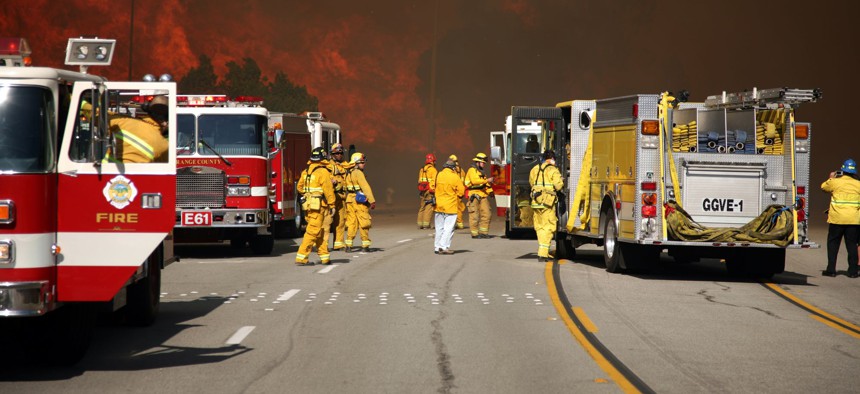Why Elected Officials Sometimes Need to Rein In Their Influence During Emergencies

Shutterstock
Instead of inserting themselves into an unfolding response, politicians may want to keep their gravitas in check.
LONG BEACH, Calif. — When disaster strikes or there’s an unfolding emergency situation, it’s not uncommon for elected officials in state, county and municipal governments to rush to the scene or to the nearest assemblage of television cameras.
For the general public, their elected officials are recognizable figures and offer a more concrete connection to the government response even if they aren’t directly responsible for executing that response. They can offer assurances of steady leadership during difficult situations.
But sometimes, the involvement of elected officials in unfolding situations can be counterproductive. Rushing to the scene can come off as grandstanding for political purposes—e.g., New York Gov. Andrew Cuomo’s unprecedented closure of the New York City subway system during a January 2015 snowstorm.
Each situation is different, naturally, but here are some wise words that every elected official should keep in mind the next time their government is dealing with an emergency situation: “Be cognizant of the influence that you wield.”
That’s what R.C. Smith, the chief of operations and recovery manager for El Paso County, Colorado, told a group of county government officials on Monday during a session on disaster preparedness at the National Association of Counties 81st Annual Conference and Exposition in Long Beach, California.
That’s not to say that elected officials should take it easy during a rapidly unfolding situation, but they should be very much aware of the potential impacts their presence can have on the response, especially when they step into an emergency operations center.
Smith, whose county had to manage two catastrophic wildfires and flash flooding situations in recent years, said that governments need to have “very specific roles” defined for elected officials during emergencies. The risk is that an elected official can sometimes—whether it’s purposeful or inadvertent—influence first responders and emergency management personnel to take a particular action even when it’s not part of the previously planned for response strategy.
A theoretical example given was an elected official hanging out in an emergency operations center talking to somebody about a particular intersection that they heard needs to be cleared and a dispatcher sends crews to that intersection immediately when the established response strategy may have prioritized other intersections.
It’s a tough balance to strike. Smith told the county government officials: “Make sure you have direct access to your office of emergency management. ... Make sure you have access to those people.”
Just make sure that having that direct access doesn’t do more harm than good at the wrong time.
Instead of inserting themselves into the response, elected officials may want to start thinking about what comes next and how they can use their influence in other ways. In the immediate hours after a disaster begins to unfold, “your emergency managers have to start thinking about recovery,” Smith told the county government officials. “They have to start thinking about the recovery that day.”
That’s where elected officials can definitely play a critical role to use their gravitas to get the resources their governments and communities need to get back up on their feet.
Michael Grass is Executive Editor of Government Executive’s Route Fifty and is based in Seattle.
NEXT STORY: NYPD Gears Up to Protect Its Officers Following Dallas and Baton Rouge Assaults






